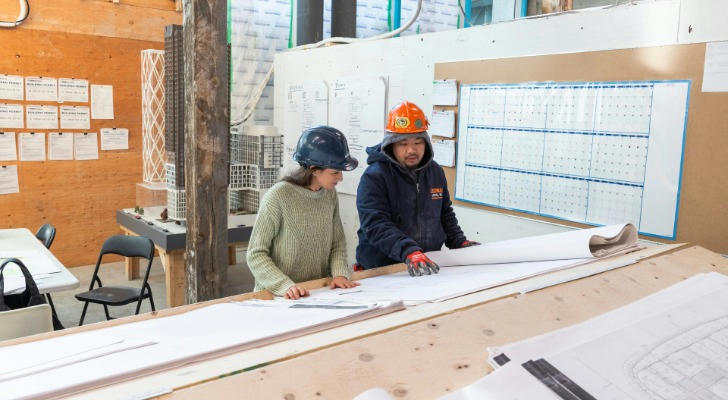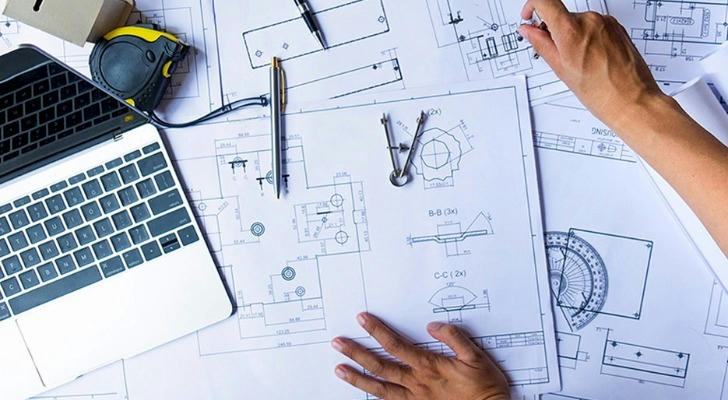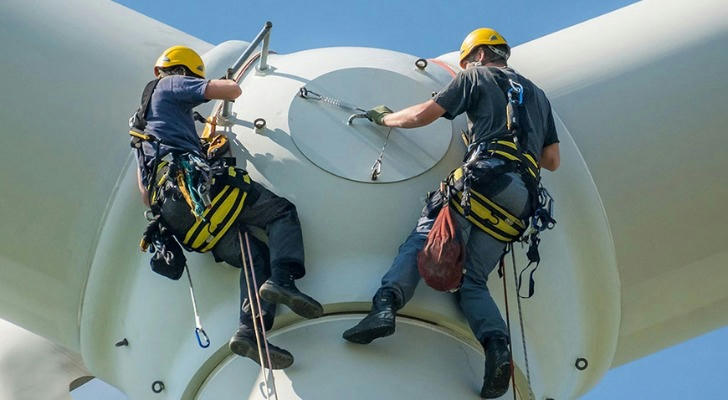Blueprint Reading for Beginners: A Key Skill in Skilled Trades
Understanding how to read blueprints is a valuable and often essential skill across many hands-on professions. From construction to plumbing to electrical work, blueprint reading helps translate ideas into real-world structures. For those interested in skilled trades, learning this ability early can make a difference in both training and long-term career success.

What Are Blueprints?
Blueprints are technical drawings used to visually communicate how something is built or assembled. They contain symbols, lines, and notes that show dimensions, layouts, and construction methods. Although originally printed on blue paper with white lines (hence the name), today’s blueprints are usually created and viewed digitally or on white paper.
There are several types of blueprints depending on the trade and the project. Some common types include:
Floor Plans: Show the layout of spaces in a building.
Elevation Drawings: Depict the outside view of a structure.
Wiring Diagrams: Used by electricians to plan electrical systems.
Plumbing Plans: Indicate pipe locations and water systems.
Each type includes standardized symbols and measurements that must be understood in context.
Why It Matters in Skilled Trades
In the skilled trades, accuracy is essential. Whether installing wiring, framing a wall, or laying out a HVAC system, the ability to interpret blueprints ensures work is done to specification.
Here are some examples of how blueprint reading is applied in different trades:

Electricians use electrical schematics to understand circuit layouts and breaker locations.
Plumbers rely on plumbing blueprints to know where to place pipes, vents, and fixtures.
Carpenters follow floor plans and detail drawings for framing, cabinetry, and staircases.
HVAC technicians use mechanical drawings to position ductwork and ventilation systems.
Blueprint reading also improves communication between team members and contractors by ensuring that everyone is following the same design plans.
Key Elements to Learn
For beginners, several basic elements should be understood to get comfortable with blueprints:
1. Title Blocks
This section, usually found at the bottom or side of a drawing, contains key information such as the name of the project, the company that designed it, scale, and date.
2. Scale
Blueprints are drawn to scale to represent real-life dimensions accurately. A common scale might be 1/4" = 1'-0", meaning every quarter-inch on paper represents one foot in real life.
3. Symbols
Standard symbols are used to represent fixtures, materials, and other components. For example, in electrical plans, a circle with a letter may indicate an outlet or switch. Symbol legends are usually included in the drawing set.
4. Dimensions
Lines and numbers are used to show measurements. Reading these correctly is essential for cutting materials or assembling components with precision.
5. Section Views and Elevations
These views show vertical dimensions and allow the reader to understand what's happening inside or behind a wall or structure.
Common Challenges for Beginners
It’s normal to feel overwhelmed when first encountering a complex set of plans. Some common challenges include:
Interpreting abstract symbols
Converting scale measurements
Following multiple layers of information across several sheets
With practice, these challenges become manageable. Many beginners start with simple residential plans before moving on to more complex commercial or industrial drawings.
Learning Resources and Practice Tips
For those looking to build confidence in blueprint reading:
- Start with physical examples such as basic floor plans and follow them alongside site visits or model constructions.
- Practice interpreting symbols using reference guides and online libraries of blueprint standards (e.g., ANSI or ASME standards).
- Use training modules offered through trade schools, community centers, or vocational programs, which often include guided walkthroughs of sample plans.
According to the National Center for Construction Education and Research (NCCER), blueprint reading is one of the most consistently taught skills across their craft certification programs (source: nccer.org).
How It Supports Career Growth

For individuals interested in trades such as carpentry, welding, or electrical work, having blueprint reading skills sets a strong foundation for growth. Technicians who can interpret technical drawings with confidence are more likely to:
- Complete tasks with fewer errors
- Communicate clearly with project managers and engineers
- Advance into supervisory or planning roles
Data from the U.S. Bureau of Labor Statistics shows that occupations in the construction and skilled trades sector are projected to grow steadily through 2032, with many roles requiring blueprint literacy as a baseline skill (source: bls.gov).
Conclusion
Blueprint reading might seem like a niche skill, but it plays a central role in nearly every project in the skilled trades. For beginners, developing this ability opens up a wide range of opportunities, both in training and in the field. With patience and practice, interpreting technical drawings becomes second nature—helping turn ideas into real results, one line at a time.
Wind turbine technicians, often referred to as "wind techs," play a crucial role in the renewable energy sector. Their work ensures that wind turbines operate efficiently, contributing to the generation of clean electricity. This profession has garnered attention due to its rapid growth and the increasing demand for sustainable energy solutions.

Core Responsibilities of a Wind Turbine Technician
Wind turbine technicians are tasked with a variety of duties to maintain and repair wind turbines. Their responsibilities include:
Routine Maintenance: Performing regular inspections and maintenance tasks to ensure turbines function optimally. This includes checking mechanical components, electrical systems, and hydraulic systems.
Troubleshooting and Repairs: Identifying and fixing issues that may arise, such as mechanical failures or electrical malfunctions.
Safety Checks: Ensuring all safety protocols are followed during maintenance and repair activities, especially when working at significant heights.
Data Collection: Gathering and analyzing data to monitor turbine performance and predict potential issues.
These tasks often require technicians to work at heights, sometimes exceeding 260 feet, and in various weather conditions. Safety equipment and protocols are essential components of their daily operations.
Skills and Qualifications
To excel as a wind turbine technician, individuals typically possess:
Mechanical and Electrical Aptitude: Understanding of mechanical systems, electrical circuits, and hydraulic systems.
Physical Stamina: Ability to climb tall structures and work in confined spaces.
Problem-Solving Skills: Capability to diagnose issues and implement effective solutions.
Technical Training: Completion of a technical program or associate degree in wind energy technology or a related field.
Certifications: Obtaining certifications, such as those from the Global Wind Organization, can enhance job prospects.
Employment Outlook

The demand for wind turbine technicians is on the rise. According to the U.S. Bureau of Labor Statistics, employment in this field is projected to grow by 60% from 2023 to 2033, significantly faster than the average for all occupations. This growth is driven by the expansion of wind energy projects across the country.
Salary Expectations
As of May 2024, the median annual wage for wind turbine technicians was $62,580. The lowest 10% earned less than $49,110, while the highest 10% earned more than $88,090. Salaries can vary based on experience, location, and the specific employer.
Work Environment
Wind turbine technicians often work in remote locations where wind farms are situated. Their work schedules can include evenings and weekends, especially when urgent repairs are needed. The job requires adherence to strict safety standards due to the inherent risks associated with working at heights and with heavy machinery.
Career Advancement
With experience, wind turbine technicians can advance to supervisory roles, specialize in certain types of turbine systems, or transition into related fields such as wind farm management or renewable energy consulting.
Conclusion
Wind turbine technicians are integral to the operation and maintenance of wind energy systems. Their work supports the broader goal of increasing renewable energy production. As the industry continues to grow, so do the opportunities for individuals interested in this dynamic and impactful career path.
